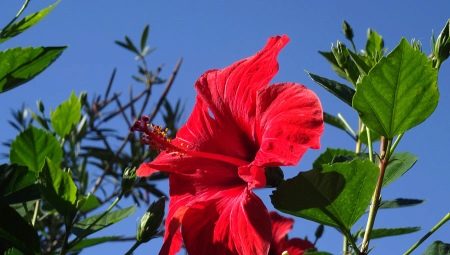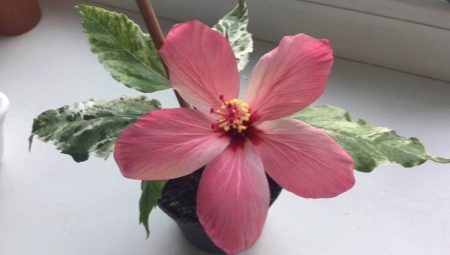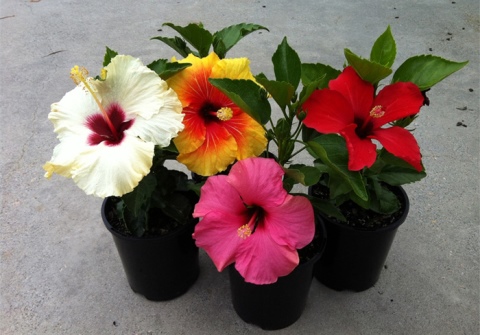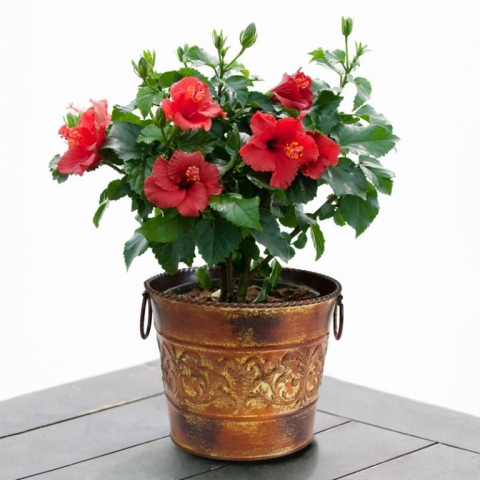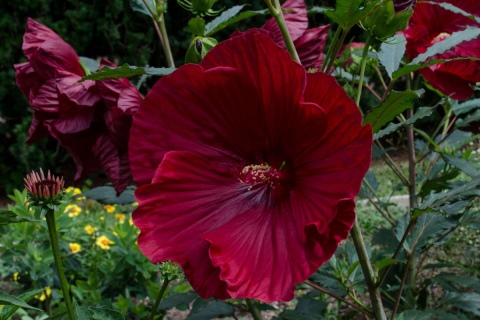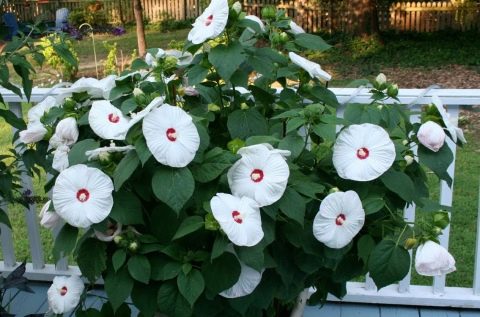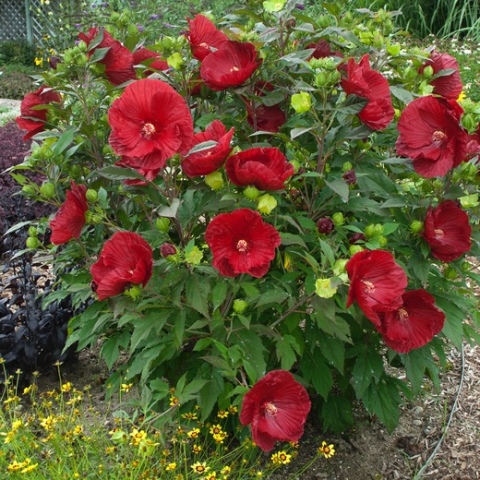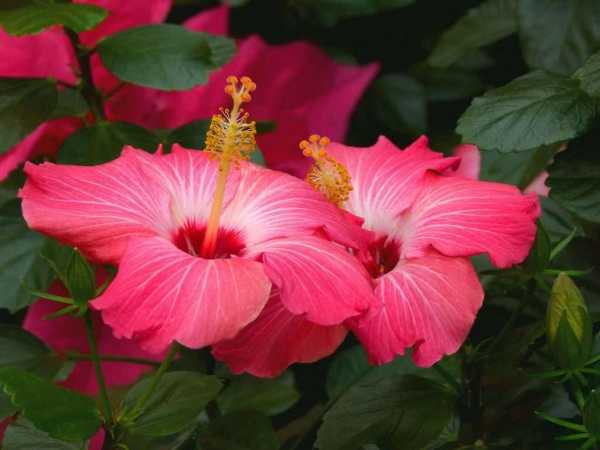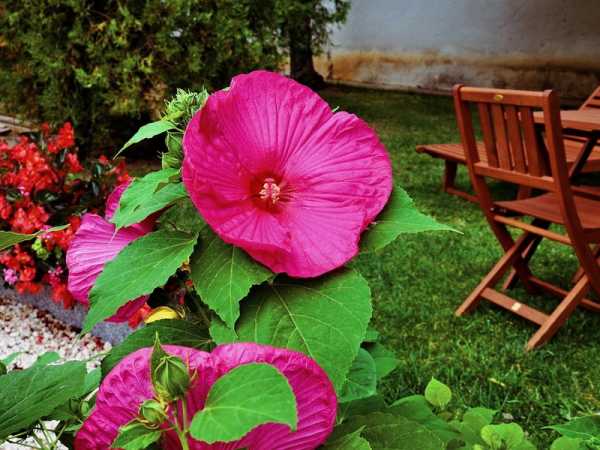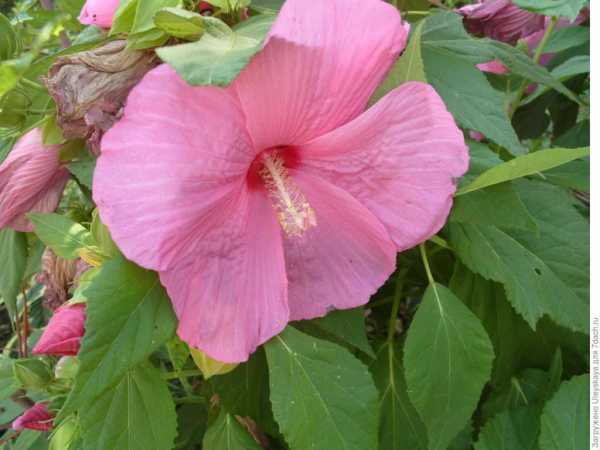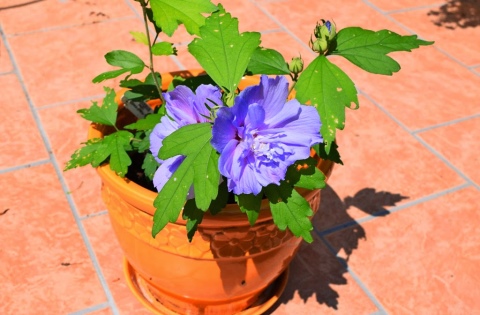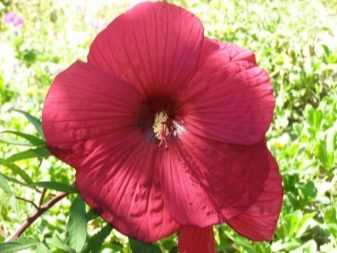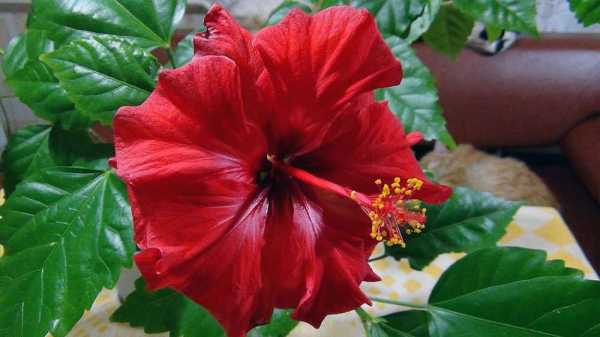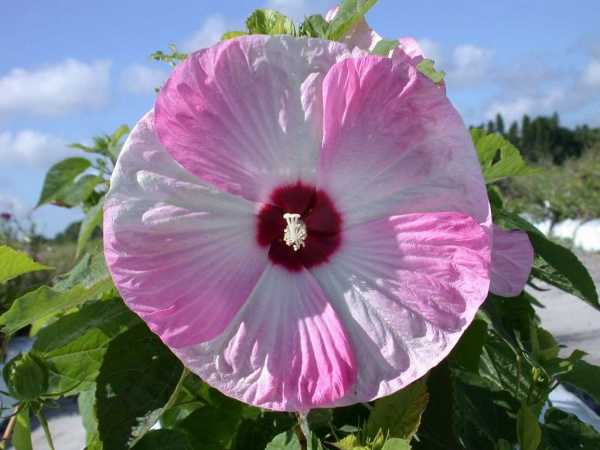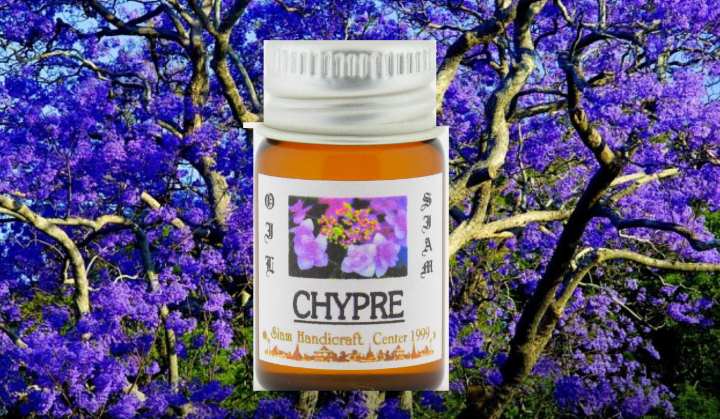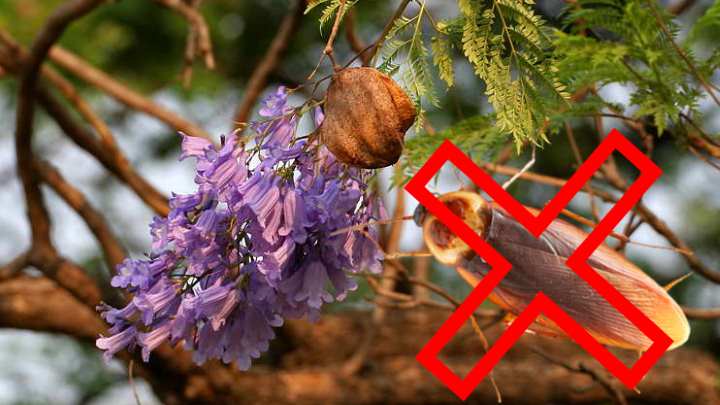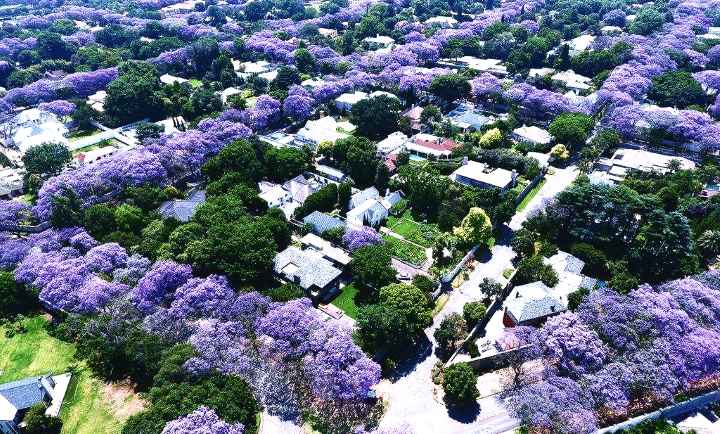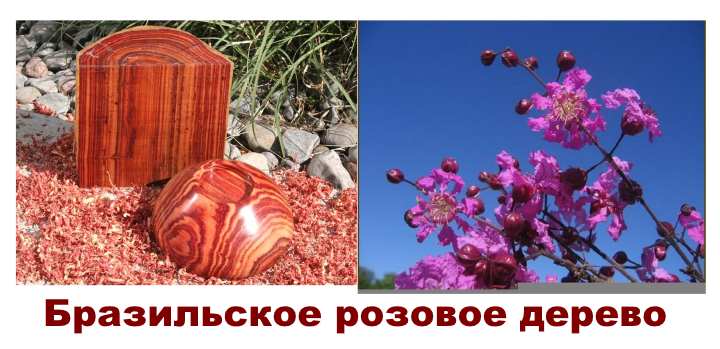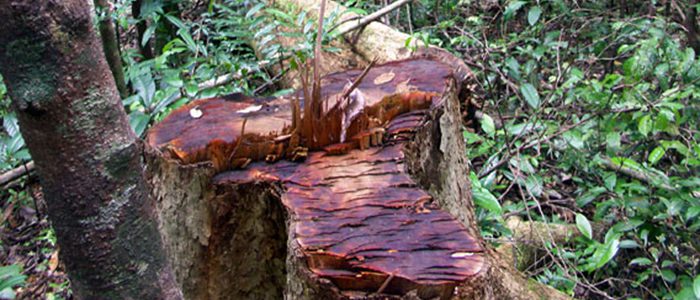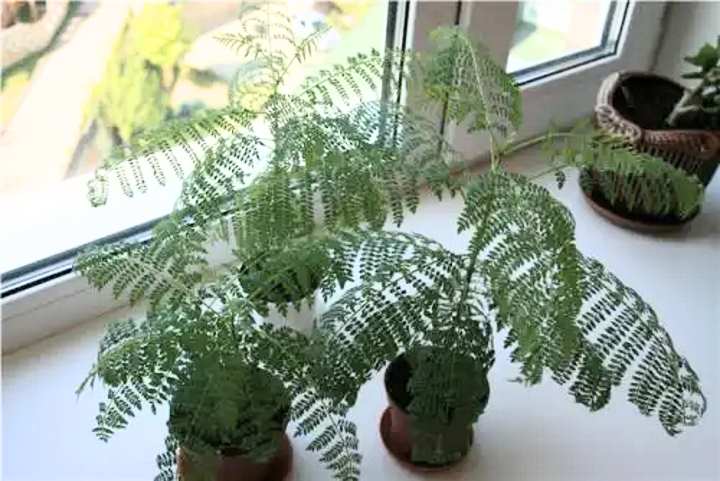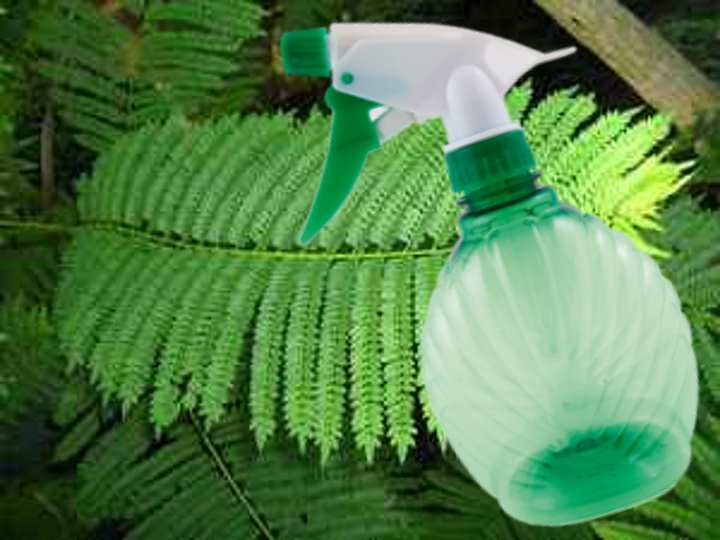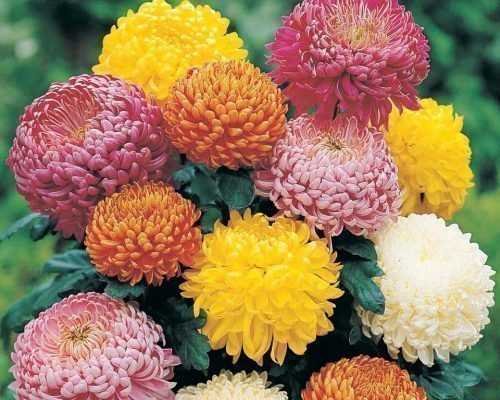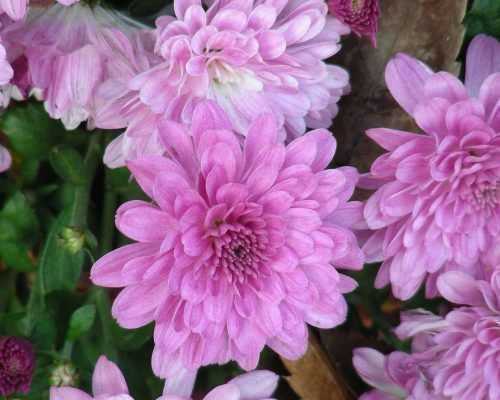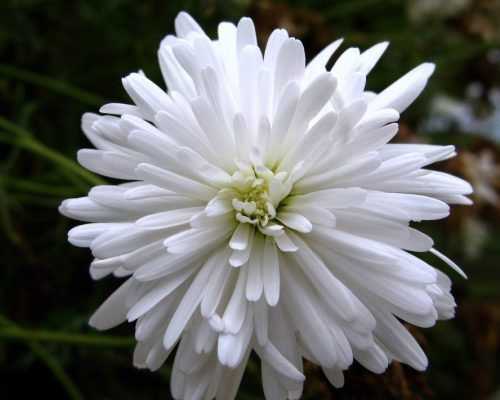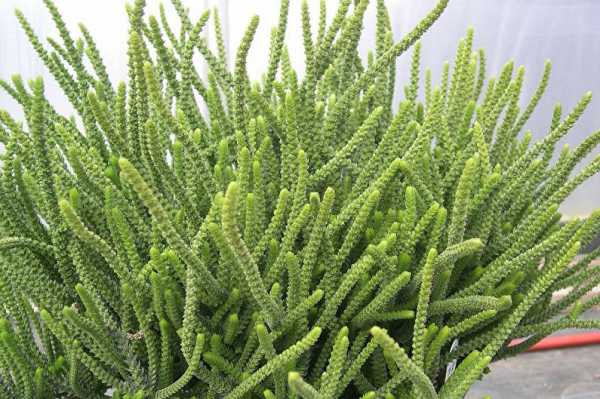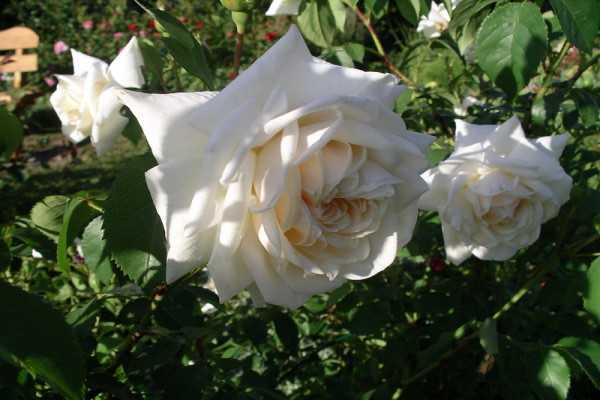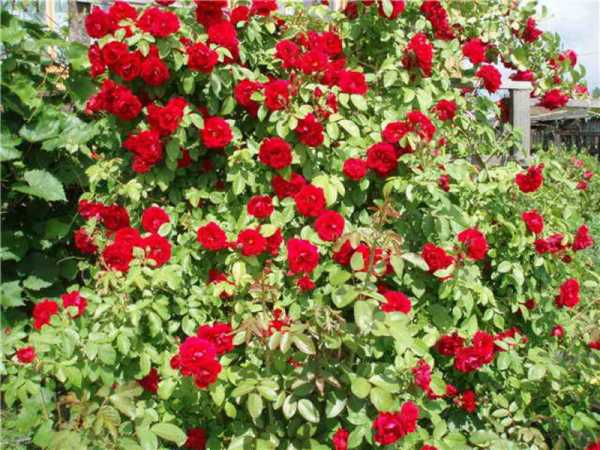Growing
Seeds
Seedlings are grown in a greenhouse. The seeds are preliminarily stratified (sowing is stored in the refrigerator for up to 3 weeks). Growing scheme:
- seeds are distributed in the container at a distance of 5 - 7 cm;
- sowing is sprinkled with a mixture of sand and peat, well moistened;
- the container is covered with a film;
- seedlings are daily ventilated, moistened;
- the light is bright, the air temperature is 25 - 27 ° C;
- when 2-3 leaves appear, the seedlings dive into separate containers;
- young bushes are planted in open ground for the next spring.
Cuttings
Cutting is recommended after spring pruning. Healthy adult shoot tips are selected.
Each cutting should have 2 - 3 internodes.
Rooting rules for cuttings:
- the lower leaves break off at the base of the cutting;
- the base is dried, processed with a growth stimulant;
- cuttings are placed in water or buried in a wet substrate;
- after 3 weeks, the cuttings are planted in separate pots;
- air temperature for rooting is 18 - 22 ° C, flowering is expected in a year.
Hibiscus in the house
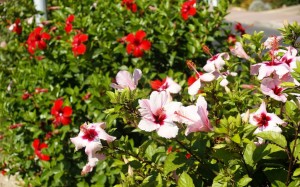 A hibiscus or Chinese rose can help restore normal family relationships. This flower smooths out the tension between the son-in-law and mother-in-law, parents and children.
A hibiscus or Chinese rose can help restore normal family relationships. This flower smooths out the tension between the son-in-law and mother-in-law, parents and children.
A joint tea party near a blooming Chinese rose will resolve even a protracted conflict, help restore mutual understanding and establish a friendly atmosphere in the house.
It is recommended to have hibiscus in every home. It is believed that they have positive energy and attract good spirits to the house. Also, this flower has a positive effect on physical and mental activity.
In addition to all its beneficial properties, hibiscus also purifies and heals indoor air. And weak plants growing near hibiscus begin to feel better.
Gardenia jasmine
Gardenia jasmine is an evergreen shrub of the Madder family. In nature, gardenia grows in China, Japan, Vietnam, and in other countries ...
Smilax
Smilax or sassaparilla is a perennial woody liana of the Smilax or Sassaparilla family. Distributed in countries with subtropical and tropical climates. ...
Mad cucumber
Crazy cucumber is an annual herbaceous poisonous plant of the Pumpkin family. In the wild, it grows along ravines and roadsides, ...
Loosestrife
Willow loosestrife or plakun-grass is a perennial herbaceous melliferous plant of the Derbennikovye family. Prefers the shores of reservoirs, flooded meadows, swamps. Grows on ...
Care
Temperature
The optimum air temperature is 22 - 26 ° C. The plant is winter-hardy, able to withstand temperatures as low as -10 - 15 ° C (with shelter).
Important! It is better to plant in a place protected from drafts and gusts of cold wind.
Watering
In summer, for better flowering, abundant watering is required after 1 - 2 days. In autumn, watering is moderate. It should be watered with soft, settled, warm water at the root.
Overdrying the soil leads to the fall of the buds.
Light
The variety prefers bright diffused lighting. Planting is carried out on the east or west side of the house.
With a lack of light, the stems are stretched, flowering slows down.
Priming
The soil should be loose, fertile, well-drained. Soil composition:
- Garden land - 2 h.
- Peat - 1 tsp
- Sand - 1 tsp
- Humus - 1 tsp
- Drainage.
Compost or rotted manure is poured into the soil. Part of the sod land is added to sandy soils.
Fine gravel, clay fragments, expanded clay are used as a drainage layer.
Pruning
- After wintering, all dry and frozen stems are cut off.
- In autumn, adult bushes should be thinned out, cut out the shoots that are bare at the base.
- In spring, shoots are shortened by 2/3, weak, damaged, old stems are cut to the very base.
- Places of cuts are sprinkled with crushed charcoal.
Top dressing
- In the spring, mineral complex dressings with a high nitrogen content are introduced to build up the green mass of the bush.
- In early summer, during the formation of buds and abundant flowering, potash mineral fertilizers should be used.
- Phosphorus supplements are required throughout the summer to support flowering and prepare for winter.
- Peat is scattered over the soil surface - organic fertilizer (for the development of a powerful root system).
Transfer
The transplant is carried out in early spring, in April. Seedlings are transplanted from temporary containers, and adult bushes are also planted as the root system grows.
Transplant scheme:
- A landing hole is dug in the size of 2 rubles. more root volume.
- The soil is mixed with the compost.
- A seedling is removed from a temporary container along with an earthen clod.
- The seedling is placed vertically in the hole.
- The voids are filled with the prepared mixture, the soil is compacted.
- The soil is abundantly moistened.
In cold climates, the plant is grown in containers. In the spring they are taken out into the fresh air, the containers are dropped in the garden or located in a warm, lighted place.
Important: after the formation of buds, it is not recommended to move and rotate the containers.
How it hibernates in the garden
- In a warm climate, the plant hibernates without shelter. At the end of autumn, all thin shoots are cut, leaving only the "skeletal" stems. The soil is mulched with peat, fertilized through watering with phosphorus additives.
Young saplings of garden hibiscus, up to 3 years old, require light shelter (coniferous litter, spruce branches, leaves).
- In areas of the middle lane, the plant needs protection for the winter. The soil is mulched with fallen leaves, the cut bushes are covered with straw, brushwood, and coniferous spruce branches. At the beginning of winter, the bushes are tied with burlap or agrofibre.
- In the northern regions, it is recommended to dig up the plant for the winter, transplant it into a tub. The containers are moved to a cool room with good light until next spring.
After wintering in the open ground, when the heat is established (air temperature 12 - 15 ° C), the shelter is removed. For the appearance of the first shoots, the soil is cleared.
Hibiscus varieties with photos

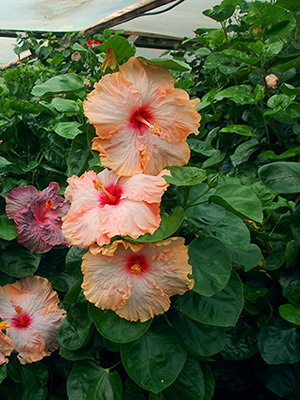
The hibiscus variety Allure has simple pink flowers, with a more intense color in the middle of the petals.


White Diamond has simple mauve flowers and a large number of white streaks and spots on the petals.

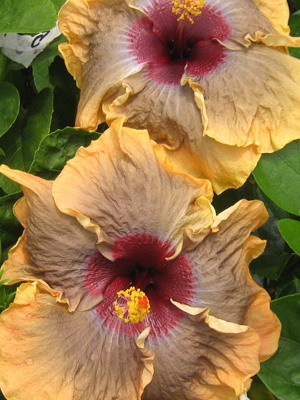
The Cloudy Days hibiscus variety has simple, grayish-brown flowers with a wide, light beige border around the edge of the petals.

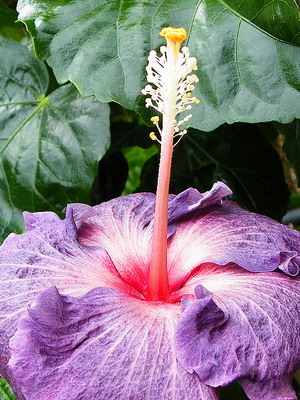
The Snowy Sky cultivar has a simple, lavender color with white spots and silvery streaks along the veins.
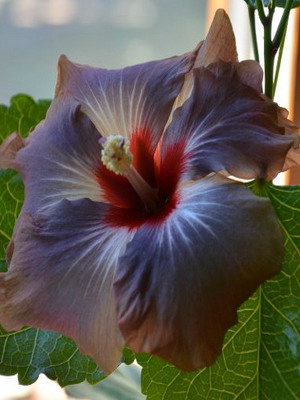

The Dark of Night variety has an unusually colored flower: the petals are grayish-purple and burgundy (depending on the conditions of detention), bright red at the base.
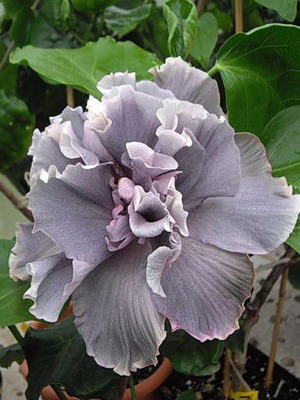
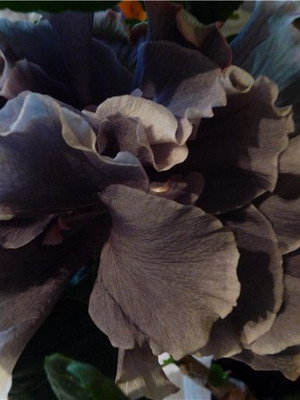
The hibiscus variety Marianne Charlton has gray flowers in the center of the petals, white at the edges.
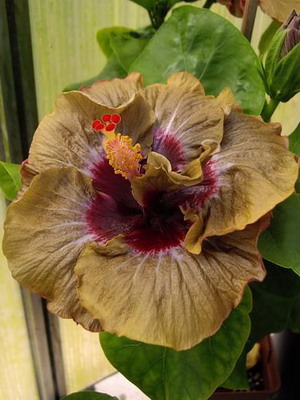
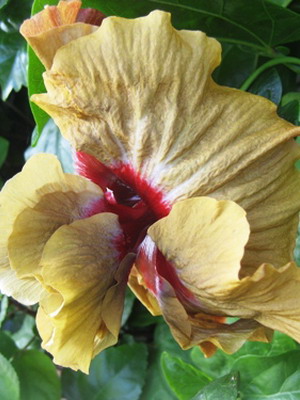
The Magic Mission hibiscus variety has double mustard flowers with a burgundy base of petals.

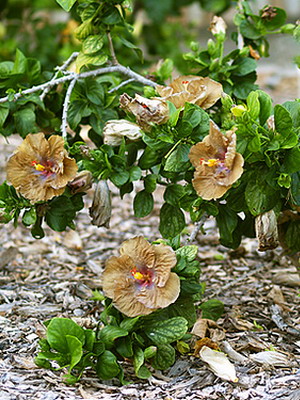
The Wall Flower cultivar is distinguished by its simple, unusual color flowers - brown-golden with a lilac base of the petals.
Popular species and their photos
They like to decorate gardens with Syrian hibiscus, because it stands out for its variety of shades and colors. In the photo you can see what the varieties of the Syrian hibiscus look like.
Oiseau bleu
Oziau Blue hibiscus is a deciduous shrub that grows 2-3 m in height.Its dark green leaves up to 10 cm long have denticles at the edges. In single blue flowers, the center is colored red. The plant needs to be covered for the winter.
Red Heart
Hibiscus Red Hart is a shrub:
- straight;
- fast growing;
- compact.
It has a uniform, dense crown and large white flowers. Their central part is colored red. Strong branches of an adult plant reach 1-2 m in width, 1.5-2.5 m in height. The dark green leaves are egg-shaped, similar to chrysanthemum. They bloom late. If the spring is cold, the leaves turn yellow-white.
Mathilda
Hibiscus Matilda is considered one of the most flowering varieties. Reaches a height of 2-3 m. Dark green leaves with a serrated border grow up to 10 cm. The flowers are pink with a red spot.
Maike
Hibiscus Maike - this most graceful and delicate species is also one of the most resistant to frost and typical diseases. The shrub stands out for its slow growth, there are almost no leaves on it for the winter. Pink five-leafed inflorescences are enormous. The red center is considered a bright accent, thin lines of the same color depart from it.
Blue Chiffon
Hibiscus Blue Chiffon (not to be confused with the Chiffon variety) stands out for its excellent color. Densely double blue buds appear among the small green leaves. This flower variety is resistant to drought and frost. It requires a lot of sunlight, so it is recommended to plant it in the garden.
Duc de Brabant
The Duc de Brabant shrub hibiscus is medium-sized. The shrub is shaped like a ball, so the purple buds look amazing. This variety is adapted to cold weather, because it was specially bred for growing outdoors. It is distinguished by long flowering.
Ardens
The Ardens cultivar is compact. This shrub has a uniform and dense crown, double purple flowers. The branches arranged vertically are quite strong. An adult plant extends 1-2 m in width, reaches 1.5-2.5 m in height. The green ovoid leaves look like chrysanthemum leaves and bloom late. Ardens blooms with large double flowers red-violet or purple color, in the center there is a 9.5 cm stain of red wine color.
Planting and care in the open field
Next, let's talk about growing Syrian hibiscus outdoors.
Temperature
He loves warmth, the optimum air temperature is 20 - 25 ° C. With abundant watering, it tolerates heat. Withstands temperatures down to -20 - 25 ° C in winter.
Watering
Water in the summer should be every other day, abundantly. Warm clean water is used for irrigation.
Important: To maintain a vibrant flowering, the soil must be constantly moist, but not soggy. Watering is reduced in autumn.
Light
The lighting is bright, diffused. Direct rays can burn leaves. In the shade, the bushes do not bloom well, the stems are elongated. The optimal landing site is east and west.
It is necessary to plant the plant in a place protected from drafts and gusts of strong wind.
Priming
The soil for the plant should be loose, light, fertile, permeable. Soil composition:
- leaf land - 3 hours;
- sod land - 4 hours;
- sand - 1 tsp;
- humus - 1 tsp;
- drainage (crushed stone, expanded clay, ceramic fragments).
Pruning
- In spring, old shoots are shortened by a third of their length.
- In autumn, bushes are thinned out - old stems are cut out at the base.
- When transplanting, weak and damaged shoots are cut off.
- The main trunk is not trimmed.
With the help of form-building pruning, it can be grown as a standard tree, creating a different crown shape in the form of a cube, a ball, a pyramid.
After pruning, the topsoil should be mulched with compost or peat to nourish and protect the root system.
Top dressing
In April, nitrogen fertilizers are introduced to stimulate the growth of young shoots. From June to early autumn, phosphorus fertilizers are required for the formation of buds. In late autumn, the bushes should be fed with potash fertilizers.
Balanced mineral complexes high in iron and magnesium are regularly used to support growth and prevent disease.
Fertilizers are applied once every 12 - 14 days. Liquid dressing, applied through watering. Granules and powder are embedded in the soil, applied only after abundant watering. Organic fertilizers (humus, compost, peat) alternate with mineral fertilizers and are used as mulch to keep the soil warm and moist.
Transfer
In temperate and cold climates, it is recommended to plant ready-made, strong nursery seedlings with a good root system. It is recommended to replant young bushes in spring. Rooting time - up to 1 - 1.5 months.
Transplant procedure:
- a planting pit is being prepared (in accordance with the volume of the root);
- a plant is removed from the container along with an earthen lump;
- dry root processes are cut off;
- the bush is set in the hole, covered with soil;
- abundant watering;
- mulching the top layer.
Important: tubs and pots are taken out into the fresh air in spring, containers can be dug in the garden.
Wintering
Shelter for mature plants is not required in warm climates. It is enough to cut off the bushes, mulch the soil with leaves, peat. Young seedlings are covered with coniferous spruce branches for the winter. At the beginning of winter, they are tied with sacking. In temperate latitudes, additional protection is required. Bushes are covered with coniferous branches, leaves, straw. With the onset of the first frosts, the plant is covered with agrofibre. In cold climatic conditions, plants are dug up for the winter, transplanted into temporary containers. The containers are moved to a well-lit place in the house until next spring.
The cover is removed gradually at a temperature of 12 - 14 ° C. Adaptation to the bright sun is necessary. The soil is cleared and loosened.
How to take care at home?
Temperature. Hibiscus comes from the south of China, therefore it loves warm air. This flower is most comfortable at temperatures from 18 to 22 degrees. But it should be borne in mind that the flowering of hibiscus should take place in a cooler environment, and the most optimal temperature during this period will be 15 degrees.
Watering. The Chinese rose is very fond of water, and therefore, in the warm and hot season, it needs to be watered twice a day. Water needs warm and well-settled. In autumn and spring, watering can be carried out once a day, preferably in the morning. Another plant needs regular spraying, but it should be remembered that the flowers cannot be sprayed directly, they must remain dry
To create the desired level of humidity, you can use electric humidifiers or simply put containers of water near the battery or heaters.
Important: Do not allow the hibiscus soil to dry out. To prevent this from happening, it is necessary to cover the soil with sphagnum moss.
Light
Hibiscus is very fond of the bright sun, therefore he will like a place on the windowsill of the south window. But under the direct hot rays of the sun, the flower can burn, therefore on especially hot days it is better to shade it or set it a little further, for example, on a table near the window.
Priming. The soil should be loose and light, with good air permeability. Hibiscus will love a mix of humus, leafy soil, and clay turf in a 1: 1: 2 ratio. You can also add a small amount of river sand and charcoal.
Pruning. Pruning is usually done in the spring and fall. In the spring, they form the crown of the plant, give it the desired shape. In the fall, pruning is done to stimulate future flowering. It is necessary to determine the height of the plant.
Find the top kidney and step back 3-4 centimeters from it.
Prune the plant.
Likewise, prune side shoots, if necessary.
Top dressing. Top dressing is required during flowering. Fertilizers with nitrogen and potassium will help the plant to set more buds. You can feed the Chinese rose in the autumn, but in this case, supplements with a low nitrogen content will be optimal.
Pot. Any pot that matches the size of the hibiscus roots will do.When transplanting, you should always take a container that is slightly larger than the previous one.
Transfer. As the plants ripen, they are transplanted annually in the spring, adults - every 3-4 years.
Important: If the transplant is not carried out, then it is necessary to remove the topsoil and replace it with fresh soil.
Pour expanded clay into a new pot, then soil.
Sprinkle the hibiscus with water. So it will be more convenient to remove it together with the earthen lump.
Remove the plant by gently holding the pot.
Place the hibiscus in a new pot along with a lump of earth.
Top up with soil.
Water abundantly and cover the ground near the roots of the plant with foil for two days.
Wintering. In winter, do not drop the temperature below 10 degrees, as colder air can lead to shedding of leaves. At this time of year, hibiscus has the lowest liquid requirement, so watering is reduced to a minimum. It is also better to refuse feeding for this season.
Cooper's Hibiscus Care Secrets
Florists have long mastered the intricacies of caring for Cooper's hibiscus at home. Secrets of active growth and development - in lighting, watering and feeding
It is also important to prune the shoots in time to form a beautiful crown.
Watering
Variegated hibiscus is hygrophilous. It feels comfortable when the soil in the pot is constantly moisturized. If the room where the pot with the Chinese rose is warm enough, then it should be watered every 3-4 days. In addition, the plant benefits from daily spraying of the foliage. For water procedures, you need to take settled water at room temperature. And after them, it is recommended to loosen the top layer of soil.
Priming
Hibiscus prefer light, breathable soils. For planting them, you can purchase a special soil or prepare the mixture yourself. To do this, take the following components:
- garden land;
- peat;
- coarse sand or perlite.
All parts must be added in equal amounts. Some growers recommend mixing a little lime into this mixture.
Flower pot
The size of the planting container for hibiscus should be small. If the plant is placed in a pot that is too large, it may not bloom. The container must be selected with a drainage hole.
Top dressing
Fertilizing Cooper's variegated hibiscus is required throughout the growing season, from the onset of spring to the end of autumn. For this, you can use ready-made mineral compositions. At the same time, the nitrogen content in them should not be too high, since this microelement activates the growth of green mass. And this is not always beneficial. Hibiscus with variegated leaves may lose its main highlight - its unusual color.
Transfer
Young Chinese roses under 5 years old need replanting. A new flower pot is selected so that it is slightly larger than the previous one. Then they act like this:
A drainage layer about 2 cm thick is poured onto the bottom.
The plant is carefully removed from the old container so as not to damage the root system. They are examining the underground part.
Placed in a larger pot while filling with fresh soil and tamping lightly
The top layer of soil should be 1.5–2 cm below the edge of the pot.
Pruning
It is advisable to carry out this procedure in the spring, when the shoots begin to grow actively, the buds wake up. In order to stimulate the flowering of Cooper's hibiscus, it is recommended to cut its shoots to a third of the length. It should be borne in mind that the buds appear only on branches older than 3 months. Therefore, late pruning delays flowering. Sometimes flower growers correct the shape of the Chinese rose in the fall, removing dried, damaged, protruding shoots.
Wintering
In winter, there is a dormant period. In order for the plant to rest by the beginning of the new season, it is necessary to provide appropriate care: reduce the air temperature to +16 0 - +22 0 С, reduce the frequency of watering, if possible artificially extend the daylight hours with the help of additional lighting.
Growing: planting with seeds and cuttings
Most popular growing methods: seed and cuttings.
- fresh seeds are pre-soaked in a rooting stimulator for 12-14 hours;
- degreased in a solution of potassium permanganate;
- leave wrapped in a damp cloth;
- hatched sprouts are aired and planted in the ground.
Not the fastest way, but this way all the properties inherent in the original species are preserved.
- the stalk (10-15 cm) is cut in February;
- powdered with crushed activated carbon;
- takes root in wet sand under a film at a temperature of 22-24 years;
- after 2 months it is transplanted into a separate pot.
Young plants are very afraid of cold weather, therefore, with a sharp drop in temperature, they must be covered.
The instruments used in the work must be sterilized.
Maple-leaved Hibiscus Mahogany (Mahogany Splendor)
In the English version, this variety of sour hibiscus (as we already know, maple-leaved is only a commercial name, in nature there is no such name), is called Mahogany Splendor ("Magnificent mahogany").
 |
This variety is grown in our country as an annual from seeds, although it is a semi-shrub by nature. Able to reach 1.5-1.8 m in height and 60-90 cm in width. It has really magnificent maroon lobed leaves with crenate wavy edges, for which it is grown. Flowers are few, wine-red, large, but usually the plant does not bloom here. The variety combines sun-loving and high heat resistance and, at the same time, can grow on the shore of a pond and even in small shallow water. Suitable for urban landscaping, resistant to atmospheric pollution. See below for sowing seeds. Seedlings grown in a greenhouse or indoors have bronze tones; after planting in the sun, they acquire a rich burgundy color.
Care features
Top dressing. Accepts organic fertilizers well. For faster growth and long-term flowering, hibiscus must be fed in this way: in the spring with nitrogen fertilizers, from July - forfor-potassium fertilizers.
Wintering. Hybrid hibiscus hibernate like peonies, buds in the ground. Powerful root system withstands frosts down to -30 degrees
Therefore, above the latitude of Moscow, winter shelter is necessary.
Important: Before winter, the stems of all hybrid varieties of hibiscus, hibernating with buds in the ground, must be cut off by 10-15 cm. In autumn, the rhizomes of the hybrid must be mulched - sprinkled with dry fallen leaves, so the underground part of the plant will not die even in a severe winter with little snow.
Watering
He does not like stagnation of water, as well as a lack - the plant drops its leaves. Watering is necessary in moderation, after the soil has completely dried. If the weather is dry, then watering is necessary every day.
Bloom. To bloom was powerful, you must adhere to the following rules: Plant in a sunny place.
Feed during the entire flowering period.
Prevent chapping (protect from drafts).
So that the hibiscus blooms early, mulch is removed in early spring and a small greenhouse is made, which is removed with the onset of heat. After wilting, flowers must be pinched off to give the bush a neat look.
The soil. The soil near the hibiscus must be periodically loosened and weeds destroyed.
Similar flowers
There are many flowers similar to the Syrian hibiscus. One of them is a North American species - bright red hibiscus. Large bloody flowers form on it in the summer. This typically subtropical species has dark green leaves. The perennial plant is the changeable hibiscus. This well-developed deciduous shrub plant is characterized by:
- umbrella crown;
- heart-shaped leaves;
- flowers that change color depending on the time of day.
In the morning hours, the flowers of gbiscus are light, in the evening they are dark. The peculiarity of the cassava hibiscus is its wide, rough leaves. The plant blooms with bright yellow flowers with a crimson heart. This species belongs to medicinal and edible plants.
The perennial deciduous marsh hibiscus has oval leaves and rich scarlet buds. The plant stands out for its resistance to cold and unpretentiousness. The triple hibiscus grows in North and Central Africa. It grows up to 80 cm.He has small up to 4 cm flowers that bloom from morning to noon. They are colored yellow with a dark red core. Flowering lasts 1 month.
Syrian hibiscus is a perennial plant. If it is at home, it may well bloom in winter. Syrian hibiscus, with proper care in one place, has been growing for over 20 years. Moreover, he does not need transplantation and renewal.
Watering
Watering should be carried out regularly, not allowing the soil to dry out. But you should not overdo it either, since excessive soil moisture can lead to the development of root rot. This plant constantly needs a moderately moist substrate, but always without stagnant water.
Deep watering for a tree-like garden hibiscus once a week in the absence of heavy rain is sufficient. In dry and hot periods, watering should be done either every other day or after two days. It is also necessary to monitor flowering - buds and flower buds can fall off with a shortage or excess of water. To prevent the soil from crusting after watering, it is necessary to loosen it. This procedure helps open up oxygen to the roots of the plant.
Caring for this flower also includes the constant removal of withered or dried flowers, which stimulates a more intense and long-lasting flowering.
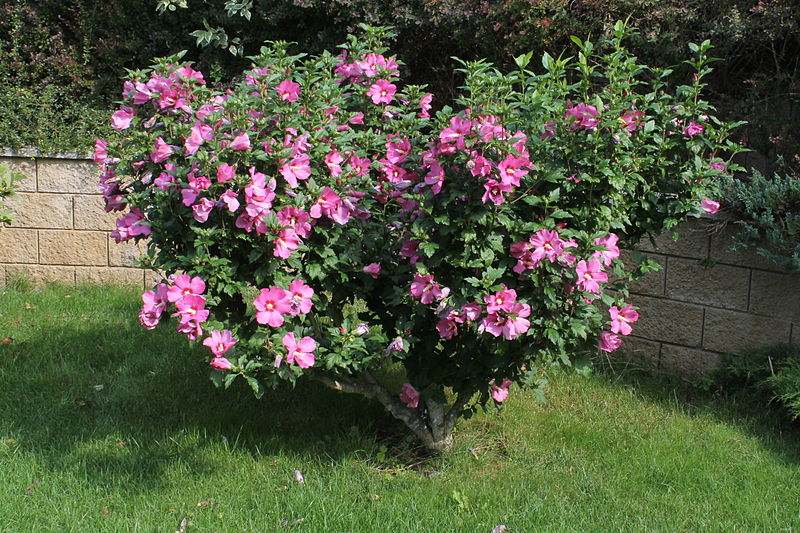
Care rules
Plant conditions should be close to tropical. Hibiscus care includes the following points:
- Water abundantly in the spring and summer, moderately in winter, do not overflow to prevent root rot.
- The temperature should be without sharp fluctuations, in winter not lower than +12 degrees. With a sharp change in temperature, the flower sheds buds, flowers and even foliage. The plant should not be exposed to drafts and direct sunlight.
- Spray the leaves, especially if the air in the room is too dry and warm.
- Loosen the topsoil.
- During growth and flowering, feed with organic and mineral fertilizers.
- Up to 5-6 years of age, transplant into a new pot every year. Transplantation should be carried out in early spring in the ground, consisting of clay-sod, leaf and humus parts in a ratio of 2: 1: 1, into which it is good to add a little sand and bird droppings. When transplanting, some of the roots are cut off, which contributes to the growth of young shoots.
We suggest watching a video with tips for caring for a Sudanese rose:
The role of hibiscus in the world
What is the significance of hibiscus in the life and culture of different countries?
- Feng Shui teachings give hibiscus the ability to strengthen family ties, kindle a passion for love, and recommends placing this flower next to the bed.
- In Western countries, it personifies the fleeting beauty of youth. In South Korea, the Syrian hibiscus is revered as a symbol of immortality.
- This plant is the state flower of Hawaii.
- Hibiscus can be seen on the coat of arms of Malaysia.
- The ritual offerings of the Hindus are garlands of hibiscus flowers.
- In southern Africa, the flowers of this plant are eaten when food is scarce. In some countries, they are used to make paper. Jam is made from the flowers of this plant.

Despite the cultural differences between different peoples, there are many similarities as to what a blooming hibiscus represents:
- He is considered the personification of femininity.
- In Victorian England, giving hibiscus was tantamount to acknowledging affection.
- In China, this plant symbolizes the transience of beauty and personal glory. It is given not only to women, but also to men.

Healing tea made from hibiscus flowers
 A healthy refreshing tea can be made from hibiscus flowers to quench your thirst. The tea is known as "Hibiscus". But it is also called "the drink of the pharaohs", "Sudanese rose", "red rose", "kandahar", "mallow of Venice", "rose of sharon", "kenaf". It is the national drink in Egypt.
A healthy refreshing tea can be made from hibiscus flowers to quench your thirst. The tea is known as "Hibiscus". But it is also called "the drink of the pharaohs", "Sudanese rose", "red rose", "kandahar", "mallow of Venice", "rose of sharon", "kenaf". It is the national drink in Egypt.
Hibiscus tea acquires a red color due to the presence of anthocyanin substances, which are characterized by the so-called P-vitamin activity, which helps to strengthen blood vessels, a beneficial effect on the circulatory system.
Hot hibiscus tea will help cleanse the liver and kidneys, get rid of toxins and calm the nervous system. It has anthelmintic, choleretic, antispasmodic and antibacterial effects on the human body. Tea can be drunk for both hypotensive and hypertensive patients. Moreover, hot tea contributes to an increase in blood pressure, and cold - a decrease.
To make hot tea at home, you need 2 tbsp. spoon dried Chinese rose petals pour 2 cups of boiling water, leave for half an hour and strain. It is not necessary to boil the tea for a long time, as it will become a dirty gray color due to the decomposition of coloring substances.
 To make iced tea, you need to pour the flowers (along with cups) with cold water overnight, and in the morning strain and use cold water. This tea quenches thirst well in hot weather.
To make iced tea, you need to pour the flowers (along with cups) with cold water overnight, and in the morning strain and use cold water. This tea quenches thirst well in hot weather.
In addition, vitamin C in flowers is completely preserved and it is recommended to add them to food in order to protect the body from viral infections.
After infusing the tea, the petals should not be thrown away like ordinary tea leaves, it is better to eat them. They contain a lot of protein, valuable amino acids that are very necessary for the human body.
Hibiscus tea helps to cope with alcohol intoxication. And with regular use, it helps to fight infertility. By consuming this tea regularly, you can not only improve your health, but also reduce the risk of getting cancer.
Hibiscus varieties
Syrian hibiscus. Its flower is a symbol of the island of Haiti and is used by locals and numerous tourists as a head ornament.
Hawaiian hibiscus. Presented as a small tree or shrub with elliptical green leaves. Flowers are bright red, five-petalled, solitary.
Hybrid hibiscus - is the result of crossing three species (Hibiscus acutifoliate, Hibiscus pink and Hibiscus red) and is a herbaceous perennial with spectacular bright flowers of various colors. Herbaceous hibiscus propagates in spring (subject to warm weather) by grafting, green grafting or dividing the bushes. The plant looks harmoniously in large flower arrays, mixed borders, boulevards, parterres, on the banks of reservoirs.

The hibiscus is tall. An evergreen tree reaching a height of 25 meters. The trunk has a fibrous bark, the crown is round and dense. The flowers are 12 cm in diameter, at first yellow, then change color to orange and red. The leaves are long, up to 20 cm. Its homeland is Jamaica.
Edible hibiscus (or Okra). Herbaceous annual plant, the young fruits of which are eaten; they are added to the first and second courses, salads, canned, dried, consumed fresh. The formation of pods (called "pods") occurs in the leaf axils. Herbaceous hibiscus has finger-shaped fruits, the length of which ranges from 6 to 30 cm.

